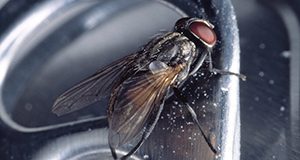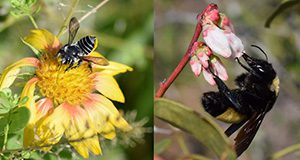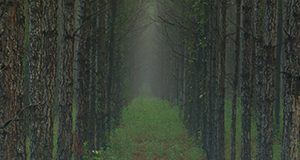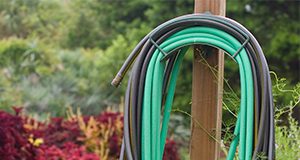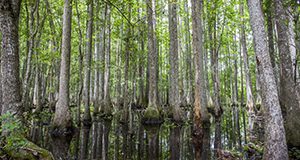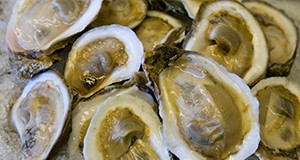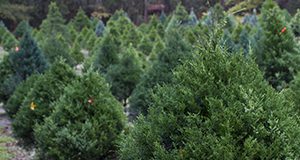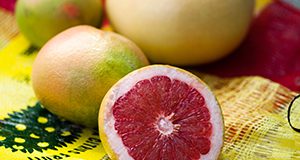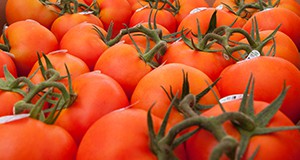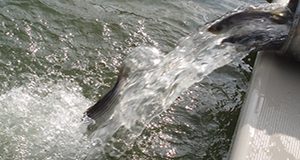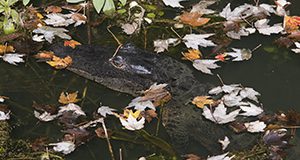While you can prevent pests from infesting your home, you might need the services of a professional to evict them if they have already moved in. The pest control industry in Florida is the largest in the nation. How do you choose the best pest control company for you? This 6-page fact sheet written by Faith Oi, James E. Davis, John M. Diaz, Sarah M. Ellis, Randall A. Cantrell, Nelly Nelson, and Judy Corbus and published by the UF/IFAS Entomology and Nematology Department is full of practical tips and advice to help you choose a reliable and effective pest control service to help you kick out any uninvited crawlies.
http://edis.ifas.ufl.edu/in1269
Author: Susan Gildersleeve
Attracting Native Bees to Your Florida Landscape
Florida is home to approximately 315 species of native wild bees. These bees rely on flowers for survival; their diets consist exclusively of pollen and nectar harvested from flowers. Recently reported declines in some bee species have heightened awareness of bee conservation across the United States and motivated efforts to increase floral resources for bees. This 7-page fact sheet written by Rachel E. Mallinger, Wayne Hobbs, Anne Yasalonis, and Gary Knox and published by the UF/IFAS Entomology and Nematology Department shows how gardeners and land managers can aid in conservation efforts by planting flowers for bees in home or community gardens.
http://edis.ifas.ufl.edu/IN1255
What Is the Value of an Existing Forest Stand?
Traditionally, the land expectation value (LEV) formula, the present value of perpetual cash inflows of timber revenues minus the present value of cash outflows of costs, has been employed as the main indicator of the value of a forest investment. However, when a forest stand is already established, the LEV approach is incomplete because it applies only to bare land. Thus, it is necessary to determine the value of a property with an existing forest stand. This 3-page fact sheet written by Andres Susaeta and Chris Demers and published by the UF/IFAS School of Forest Resources and Conservation provides the formula to determine the value of an already established forest stand at any stage of its development. This approach, known as the forest value formula, includes the value of the timber and the land. It can be used to compare the value of the stand when it is immediately harvested or when it is economically immature.
http://edis.ifas.ufl.edu/fr423
The Optimal Forest Management of an Even-Aged Stand: The Biological Rotation versus the Land Expectation Value
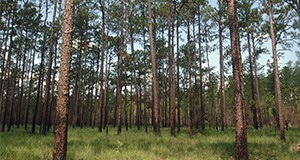
This 4-page fact sheet written by Andres Susaeta and Chris Demers and published by the UF/IFAS School of Forest Resources and Conservation provides a guide for forest landowners, managers, and stakeholders in conducting a valuation of timber investments. It reviews and provides examples of two different approaches for determining the optimal rotation age of even-aged forest stands. These methods can help forest landowners and managers in making forestry investment decisions.
http://edis.ifas.ufl.edu/fr424
Determining the Net Present Value of Timber Investments and Comparing Investments of Different Rotations
Would a forest landowner be economically better off growing a forest for pulpwood production with a short rotation instead of growing the same forest for sawtimber production with a longer rotation? To help answer this and related questions, this 4-page fact sheet written by Andres Susaeta and Chris Demers and published by the UF/IFAS School of Forest Resources and Conservation presents two approaches to determine the profitability of a forest stand. The net present value (NPV) of a single rotation provides the criterion to choose between different forest project investments of equal lives, whereas the equivalent annuity approach (EAA) is employed when forest project investments have different time lengths.
http://edis.ifas.ufl.edu/fr421
Economic Contributions of Agriculture, Natural Resources, and Food Industries in Florida in 2016
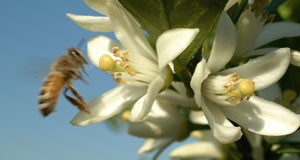
Collectively, the agriculture, natural resources, and food industries are significant contributors to the economy of the state of Florida. This 5-page fact sheet written by Christa D. Court, Alan W. Hodges, and Mohammad Rahmani and published by the UF/IFAS Food and Resource Economics Department outlines the economic contributions of these industries in calendar year 2016 to update previous reports from the Economic Impact Analysis Program and to provide current information for the purpose of informed public policy.
http://edis.ifas.ufl.edu/fe1055
Overview of Urban Aquaculture
This 6-page fact sheet written by Emily H. Roan, Laura Tiu, Roy P.E. Yanong, Matthew A. DiMaggio, and Joshua T. Patterson and published by the UF/IFAS Program in Fisheries and Aquatic Sciences, School of Forest Resources and Conservation provides introductory information for people interested in engaging in commercial or hobby-scale aquaculture in urban or suburban areas. It introduces three common types of urban aquaculture systems, describes the resources and challenges unique to urban aquaculture, and includes a handy “getting started” section.
http://edis.ifas.ufl.edu/fa217
Valuing Florida Water Resources: Households’ Willingness to Pay for Water
This 8-page fact sheet written by Tatiana Borisova, Fei He, Xiang Bi, Kelly Grogan, Tara Wade, and Syed Shah and published by the UF/IFAS Food and Resource Economics Department reviews various methods of examining the value of water availability for household needs. It may be helpful to water resource managers planning investments in water infrastructure to prepare for droughts as well as for analyzing spending on protecting source water availability, for example, by protection of aquifers or increasing the recharge of aquifers, the primary water source in Florida.
http://edis.ifas.ufl.edu/fe1068
Tung Oil Production in Florida
Tung tree seed produce an oil that is valuable in wood finishing and for various other uses. Development of a later-flowering tung tree cultivar has sparked renewed interest in tung seed as a potential alternative crop for northern and central Florida on sites having relatively well-drained, fertile soils and adequate moisture. This 3-page fact sheet written by Pat Minogue and published by the UF/IFAS School of Forest Resources and Conservation presents a history of tung oil production in Florida and provides the ecology and cultivation of the fast-growing trees. It outlines a plan for additional research to determine whether tung oil could again be produced in Florida.
http://edis.ifas.ufl.edu/fr420
Bioplastics: a better option for the environment?
Most modern-day plastics are made from petroleum, but several different types of plastics are made from plant or even bacterial sources. This 4-page fact sheet written by Maia Patterson McGuire and published by the UF/IFAS School of Forest Resources and Conservation describes four types of these bioplastics and explains why, even if a bioplastic item is listed as “compostable,” a reusable, washable alternative is often the better choice.
http://edis.ifas.ufl.edu/fr418
Wetlands as a Tool for Water Treatment
Wetlands are often referred to as "nature's kidneys" because of their ability to remove pollutants from water via storage in the soil and vegetation, as well as through losses to the atmosphere. This 7-page fact sheet written by Jay Capasso, Lisa Krimsky, and Jehangir Bhadha and published by the UF/IFAS School of Forest Resources and Conservation provides a general overview of the function and structure of large-scale treatment wetlands and the services they provide.
http://edis.ifas.ufl.edu/fr419
Financial Risk in Off-Bottom Oyster Culture along Florida's West Coast
This 10-page fact sheet written by Russel Dame, Leslie N. Sturmer, Charles M. Adams, Richard Weldon, and Kelly A. Grogan and published by the UF/IFAS Food and Resource Economics Department explains how to assess the risks involved with off-bottom oyster culture, a method allowing for growing oysters in mesh containers above the sea bottom where they are protected from predation and from becoming buried in sediment.
http://edis.ifas.ufl.edu/fe1070
Elongate Hemlock Scale, an Exotic Scale Insect Pest of Christmas Trees and Other Conifers
Elongate hemlock scale, Fiorinia externa Ferris (Hemiptera: Diaspididae), is an armored scale insect native to Japan and eastern Asia. This insect was first documented in the United States in 1908 in Queens, NY, and has since spread throughout most of the eastern United States. Though the primary hosts of the pest, hemlocks and firs, do not occur in Florida, there are concerns that elongate hemlock scale coming into the region on cut Christmas trees may disperse and establish on conifers that do occur in Florida. Of specific interest are two endangered species, Florida torreya (Torreya taxiflora) and Florida yew (Taxus floridana), which are native to a small region in northwestern Florida. Also of concern are Florida forestry species, Florida Christmas tree species, and species used for ornamental plantings in Florida. What can Florida do to protect its native conifers and farmed trees from the elongate hemlock scale? Find out in this 5-page fact sheet written by Adam Dale, Travis Birdsell, and Jill Sidebottom and published by the UF/IFAS Entomology and Nematology Department.
http://edis.ifas.ufl.edu/in1253
Economic Value of Florida Water Resources: Value of Freshwater-Based Recreational Experiences
This 8-page fact sheet written by Tatiana Borisova, Tara Wade, Xiang Bi, Kurt Oehlbeck, and Kelly Grogan and published by the UF/IFAS Food and Resource Economics Department is part 3 of the series “Economic Value of Florida Water Resources.” It uses Florida-based economic studies to provide natural resource professionals and interested citizens with information regarding the value of water-based tourism and recreation in Florida.
http://edis.ifas.ufl.edu/fe1067
Cost of Production for Fresh Market Grapefruit Grown in Indian River, 2017/18
This 4-page fact sheet written by Ariel Singerman and published by the UF/IFAS Food and Resource Economics Department presents the cost of production per acre for growing fresh grapefruit in the Indian River region during 2017/18. The methodology chosen to collect the data consisted of surveying growers directly to closely reflect growers' costs in the era of citrus greening. Typical users of the estimates in the fact sheet include growers and consultants, who use them as a benchmark; property appraisers, who use them to compute the taxes for property owners; and researchers, who use the estimates to evaluate the economic feasibility of potential new technologies.
http://edis.ifas.ufl.edu/fe1066
Who Is Interested in Purchasing Smart Irrigation Systems?
Water scarcity concerns have led to revolutionary new smart technologies for residential landscape irrigation, including evapotranspiration and soil-moisture sensor systems. The adoption of smart irrigation technologies into residential landscapes, however, has been slow. This 7-page publication written by Hayk Khachatryan, Alicia Rihn, Caroline R. Warwick, and Michael Dukes and published by the UF/IFAS Food and Resource Economics Department provides an overview of how different consumer groups perceive smart irrigation technology and the best promotions to encourage smart irrigation adoption in home landscapes. It is designed for landscapers, irrigation specialists, and marketing professionals who work with and are interested in promoting smart irrigation technologies to end consumers. Firms can use the results to tailor marketing strategies to target relevant customer segments and create promotions to encourage homeowners to adopt water-saving irrigation technologies.
http://edis.ifas.ufl.edu/fe1069
Nematode Resistance: A Useful Tool for Root-Knot Nematode (RKN) Management in Tomato
Tomatoes are a major commodity in Florida, with an estimated production value of $453 million. Among the many pests and diseases that affect tomatoes, nematodes are one of the major problems. Since the ban on methyl bromide, these ubiquitous soil pests have become much more difficult to manage. This 5-page fact sheet written by Homan Regmi and Johan Desaeger and published by the UF/IFAS Entomology and Nematology Department discusses the use of nematode-resistant tomato cultivars as a tool to help manage root-knot nematodes in Florida.
http://edis.ifas.ufl.edu/in1250
How to Define Successful Stocking of Florida’s Freshwater Recreational Fisheries
Florida researchers and fisheries management agencies have conducted years of research on stocking, a common and popular but intensive option for improving recreational fisheries, but determining how successful it has been in Florida has been challenging. This 7-page fact sheet written by Edward V. Camp, Rick Stout, Nick Trippel, Jon Fury, Stasey Whichel, and Kai Lorenzen and published by the UF/IFAS School of Forest Resources and Conservation Program in Fisheries and Aquatic Sciences reviews recent scientific literature to describe the benefits of stocking and the potential drawbacks to create useful definitions of stocking success, as well as metrics for evaluation that are specifically tailored for Florida. Well-planned stocking can not only improve recreational fishing but achieve broader research and management goals and help us to understand how fisheries function, both biologically and socioeconomically.
http://edis.ifas.ufl.edu/fa216
Valuing Florida’s Water Resources: Ecosystem Services Approach
This 6-page fact sheet written by Tatiana Borisova, Tara Wade, Xiang Bi, Kurt Oehlbeck, and Kelly Grogan and published by the UF/IFAS Food and Resource Economics Department defines the term “ecosystem services” and presents examples of ecosystem services provided by water resources. It explains three values people assign to water resources and presents a brief overview of the methods that economists employ to measure the value of water.
http://edis.ifas.ufl.edu/fe1064
Valuing Florida Water Resources: Prices of Waterfront Properties
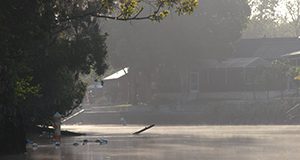
This 9-page fact sheet written by Tatiana Borisova, Xiang Bi, Tara Wade, and Kurt Oehlbeck and published by the UF/IFAS Food and Resource Economics Department explores the relationship between water quality and sale prices of waterfront properties, that is, the amenity value provided by water resources to waterfront communities. Being near to water to water generally increases the value of a residential property. However, poor water quality may decrease waterfront property prices. In other words, investments in restoring water quality can translate into increases in property value and tax collection.
http://edis.ifas.ufl.edu/fe1062/p>
